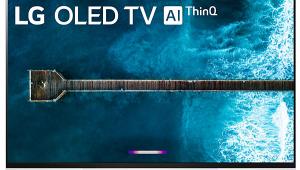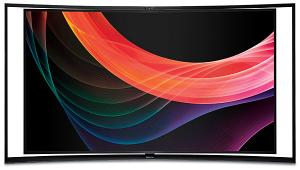LG Signature OLED65G6P OLED Ultra HDTV Review Test Bench
Full-On/Full-Off Contrast Ratio: Unmeasurable
The measurements here were made using CalMAN 5 measurement software from SpectraCal, together with an X-Rite i1Pro 2 spectroradiometer, Klein K10-A colorimeter, and AVFoundry VideoForge pattern generator.


With the G6’s controls properly set, the light output from the LG’s screen with a full black field displayed in our fully darkened testing space was unmeasurable. An OLED can shut off its pixels completely under these conditions. While this generously could be called an infinite full-on/full-off contrast ratio, I prefer the more conservative approach (science doesn’t, or shouldn’t, deal in absolutes), and refer to it as unmeasurable.
We performed only one full calibration on the G6; for reasons referenced in the main text, we didn’t calibrate for Dolby Vision or HDR10. Our calibration here was done on standard dynamic range (non-HDR) 1080p HD (upconverted to 2160p by the set) at a D65 white point and a Rec. 709 (BT. 709) color gamut. The LG’s OLED Light was set to 40, Brightness to 57, Contrast to 80, Color to 50, and Tint to 0. The Gamma was set to BT. 1886. (When viewing HDR material later, we used the TV’s default HDR settings with minor subjective tweaks.)
Pre-calibration, the min/max grayscale Delta E (from 20% to 100%) measured 1.48 at 20% and 3.93 at 100%. Post-calibration, using only the two-point white balance controls, it measured 1.21 at 20% and 2.31 at 100%. (Our post-calibration two-point control settings were 8 for Red High and 2 for Blue High; all the other white balance controls were left at 0.)
We did not calibrate color points, but the pre/post color Delta E measured a maximum of 2.59 and 2.66 (both in blue, the worst result). This might have been improved with more time to devote, but the default fell within an acceptable level of error. The post-calibration gamma averaged 2.38 and was generally uniform, apart from an insignificant drop to about 2.3 at 20%. The peak white output, as calibrated, measured 164.7 nits (48 ft-L). This is higher than what we’ve typically used for non-HDR sets (30 to 35 ft-L). But in the world where consumers are becoming accustomed to HDR, most viewers may well prefer a slightly higher peak brightness for standard dynamic range sources, as long as there are no adverse side effects.
(Delta E is a figure of merit indicating how closely a display adheres to the Rec. 709 HD color standard. Experts generally agree that at levels below 3 to 4, the result is visibly indistinguishable from perfect color. We are now using the most recent mode of calculating Delta E, DE2000.)
We also measured, without calibration, the HDR Effect Picture Mode, which offers a simulation of HDR with non-HDR content. The defaults in this mode—with a setting of Low, Medium, or High—employed the maximums for OLED Light and Contrast (both at 100) and a Color Temperature of Medium. In any of the three settings, the resulting peak brightness was about the same: approximately 428 nits or 125 ft-L. But the gammas were very different. In the Low setting, it averaged 1.55 and was roughly 1.6 at 50%. In Medium, the average gamma was 1.71 but approximately 1.9 at 50%. In High, it was an average of 1.89 and hit about 2.0 at 50%. The uncalibrated HDR Effect Delta E values were unimpressive, though generally remained below 9.0. That sounds terrible, but values between 3 and 10 are viewed as producing a typically visible but (depending on where the errors fall) acceptable alteration of the source’s color. We didn’t spend our limited time subjectively evaluating the various HDR Effect settings. The video purist will blanch at the measured results, but the feature is there if you choose to engage it. —TJN


























































